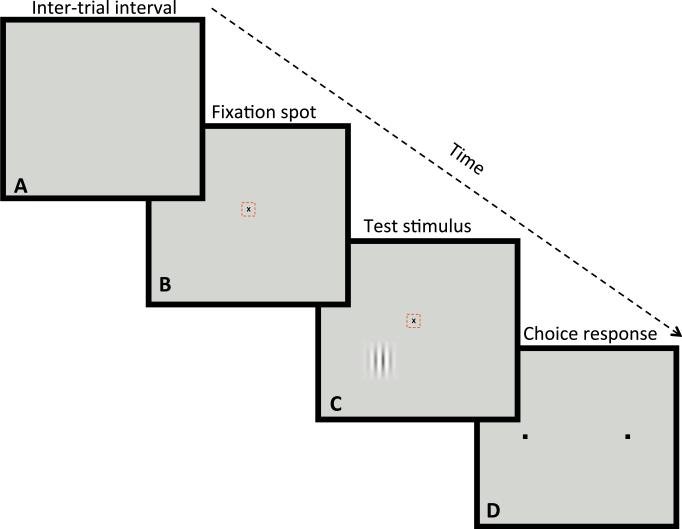Fig. 1.
Psychophysical procedure used to test contrast thresholds. The panels of the figure show the sequence of four conditions that were repeated in each trial. A. During the 3 s inter-trial interval the video display was blank. B. Each trial began with illumination of a small black fixation spot and the monkey was required to fixate within ±0.3 deg of the spot in order to advance to the stimulus presentation. The small dashed red box shows the location of the electronic window, not visible to the monkey, within which the monkey must fixate for 500 ms before the stimulus was presented. C. Once the fixation criterion was satisfied, a small test stimulus (vertical or horizontal Gabor stimulus) was presented for 500 ms at a location relative to the fixation spot that was chosen to test a single location in the monkey's visual field. The monkey had to maintain fixation during this period to reach the choice interval, otherwise the computer presented a 3 s tone that indicated fixation break, and the program returned to the intertrial interval (A). D. If fixation was maintained, the fixation spot and stimulus disappeared and two small black fixation response target squares appeared to the right and left of the fixation locus. The monkey was required to report that the test grating patch had been either vertical or horizontal by moving its fixation locus to one of two response squares (right box = horizontal, left box = vertical), and maintaining fixation of the response box for 10 ms. In each session of approximately 200 trials, only a single location in the visual field was tested. (For interpretation of the references to color in this figure legend, the reader is referred to the web version of this article.)

